The territories of Lok Bhavan, Chennai, and Ooty are habitats to innumerable species of priceless flora and fauna. Established in 1820 in a sprawling area of 156 acres, the Lok Bhavan, Chennai is having dense green cover in the heart of the city housing rich flora and fauna.
The lush green fascinating garden rosaries, ponds, sunken garden, and greenhouses are a specialty of the Lok Bhavan Ooty established in an area of about 87 acres in 1876. Both Lok Bhavans add valuable attraction and are known for their rich floral diversity.
The floral wealth of Lok Bhavans in Chennai and Ooty is unique with a mixture of indigenous and many exotic species. They house century-old Ficus benghalensis, Swietenia mahagoni, Pterocarpus marsupium, Tamarindus indica, etc., Presence of rare plants like Cycas circinalis, Pterocarpus santalinus and Santalum album in the Lok Bhavans makes it more important to conserve these for posterity.
Lok Bhavans Chennai and Ooty are being maintained with their green pasture comprising of Tall Trees, Shrubs, Climbers, Herbs, and various Wildlife protecting the natural wealth of the premises. One will find it very interesting and thrilled to witness the rich floral and faunal wealth of Lok Bhavans of Chennai and Ooty which shall impress a glimpse of beyond imagination experience.
Important trees and other floral wealth of Lok Bhavan, Chennai are described hereunder:
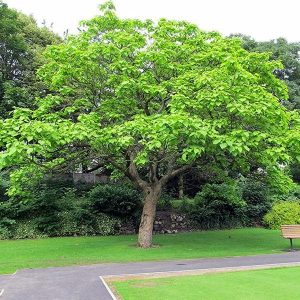
It is a large deciduous tree, growing to a height of 20-25 m; usually has a buttressed trunk, and forms a wide canopy at the crown, from which branches drop downwards. It has pale yellow flowers which appear between March and June; the fruit is glabrous, fibrous, and woody, divided into five wings.Wood is used in boat and house building as it is very hard. Wood is also used in making agricultural implements and weapons. This tree is recommended for reclamation of waterlogged areas and for social forestry. The bark is used medicinally for cardioprotection.
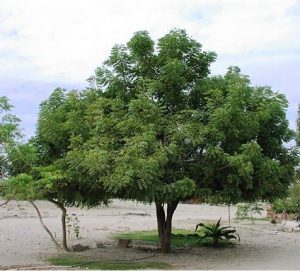
Neem is one of the most important Indian trees owing to its cultural as well as medicinal values. It is a large, semi-evergreen tree attaining a height of 20 m, with rough greyish or brownish bark and fine foliage. Leaves clustered at the end of the branches; flowers white, scented, in axillary panicles; fruits oblong drupe, yellow when ripe, contains one seed.The tree is widely grown on roadsides, gardens and public places. It has immense medicinal value. Oil
from neem seed has antiseptic and anthelmintic qualities and is used for treating rheumatism. The bark of the root and young fruits are used to cure intermittent fever. Timber is used for housebuilding purposes.
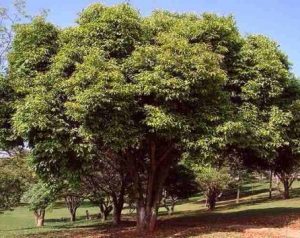
It is an evergreen and slow-growing tropical tree reaching up to 30 m in height. The leaves are pinkish when young, changing to a leathery, glossy dark green as they mature and have an aroma similar to turpentine. Flowering starts from March to April; the fruits are oblong. Unripe fruits are green and change to pink at maturity.
The wood is water-resistant and is used in railway sleepers. The fruit has a combination of sweet and astringent flavour and tends to colour the tongue purple. The seeds have anti-diabetic properties.
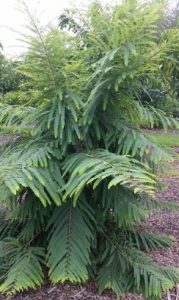
Nelli (Tamil)It is a small to medium-sized deciduous tree, reaching 8 to18m in height and known for its edible fruit. The fruits are nearly spherical, light greenish-yellow, and quite smooth and hard in appearance. The taste of the fruit is sour, bitter, astringent and quite fibrous.
The fruit is well known for its high vitamin C content. Fresh fruit pulp is used in different ayurvedic preparations. The dried rind of fruits is ground to make powder and used as Amla Churna (amla powder). The fruit extract is used in the preparation of inks, shampoos, and hair oil.
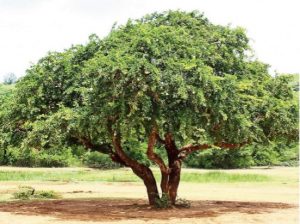
A large and slow-growing tree up to 9m in height, with rough and spiny bark. Leaves are deciduous, alternate, dark-green, leathery, often minutely toothed with oil glands and slightly
lemon-scented when crushed. Flowers are dull-red or greenish and borne in small, loose, terminal, or lateral panicles. The fruit is round to oval, with a hard, woody, greyish-white, scurfy rind.
The wood is hard, heavy, durable, and valued for construction. It also serves as fuel. The fruits are edible with astringent properties and are used for juice and jam making.
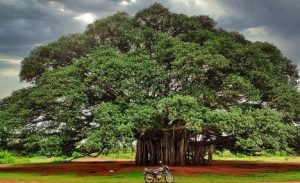
It is a very large, fast-growing, evergreen tree, growing up to 30m in height; spreads enormously with the support of aerial roots from the branches which fix onto the ground as trunks.
Leaves ovate or elliptic, leathery, and glabrous when mature. Fruit occurs in axillary pairs.
It provides cool shade. Has many medicinal properties. Root extract is used in diabetes
treatment. Young leaves are used for curing leprosy, and old leaves for abscesses. The juice is a tonic. It is an important component in Ayurveda and Unani systems of medicine.
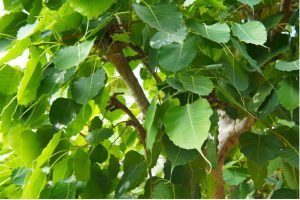
A large deciduous, spreading tree, growing up to 25 m in height; pale stem often appearing fluted on account of the numerous roots which have fused with the stem; leaves
leathery, elliptical, or rounded, tailed at the tip and heart-shaped at the base, or sometimes rounded. Young leaves are frequently pink, change to copper and finally to green, flowers.
Common trees along roadsides and open places. Sacred trees for Hindus and Buddhists and often planted on temple premises. Popular among Buddhists since Lord Buddha received enlightenment under this tree. It is used in traditional medicine for about 50 types of disorders including asthma, diabetes, diarrhoea, epilepsy, gastric problems and inflammatory disorders
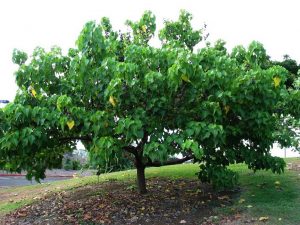
An evergreen bushy tree, growing up to 12 m, with a spread of 3-6 m. It has heart-shaped leaves and cup-shaped yellow flowers that are produced intermittently throughout the year in warm
climates. Uses In India, the ground-up bark is used to treat skin diseases, dysentery, and hemorrhoids.
It is used to make the ‘thavil’, a Carnatic musical instrument of South India. It is popular in Hawaii for woodworking (commonly turned into bowls) because of the range of colours expressed (tan, from yellow to red).
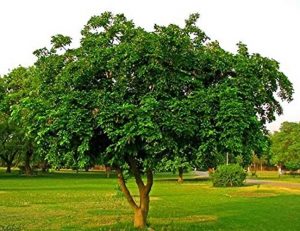
It is a fast-growing deciduous tree up to 20 m tall. The leaves are soft, shiny in early summer, and mature to a glossy, deep green as the season progresses. The raceme-like inflorescence bears two to four flowers that are strongly fragrant. Flowering occurs in March-April.
It is used for landscaping purposes as a windbreak or for shade due to the large canopy and showy
fragrant flowers. The tree is drought tolerant. Oil from the seeds is used as lamp oil, in soap making, industrially as a lubricant, and in medicine, notably for the treatment of rheumatism. It also has anti-inflammatory and antipyretic properties

